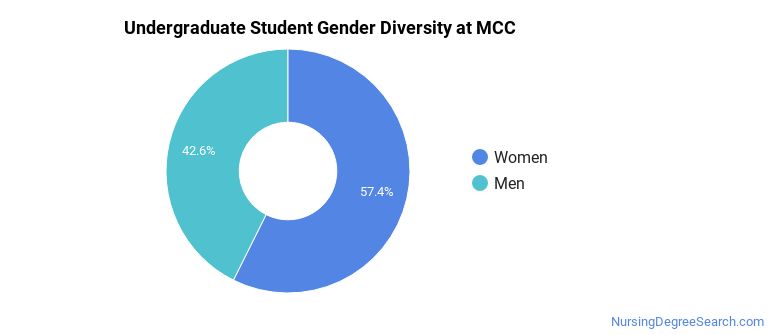Metropolitan Community College - Kansas City Nursing Programs
Located in Kansas City, Missouri, Metropolitan Community College - Kansas City is a public institution. The location of MCC is great for students who prefer living in an urban area.
Where Is Metropolitan Community College - Kansas City?

Contact details for MCC are given below.
| Contact Details | |
|---|---|
| Address: | 3200 Broadway, Kansas City, MO 64111-2429 |
| Phone: | 816-604-1000 |
| Website: | www.mcckc.edu |
How Do I Get Into MCC?
You can apply to MCC online at: www.mcckc.edu/apply-now
Can I Afford Metropolitan Community College - Kansas City?
Student Loan Debt
While almost two-thirds of students nationwide take out loans to pay for college, the percentage may be quite different for the school you plan on attending. At MCC, approximately 2% of students took out student loans averaging $4,724 a year. That adds up to $18,896 over four years for those students.
Metropolitan Community College - Kansas City Undergraduate Student Diversity

Gender Diversity
Of the 5,915 full-time undergraduates at MCC, 43% are male and 57% are female.

Racial-Ethnic Diversity
The racial-ethnic breakdown of Metropolitan Community College - Kansas City students is as follows.

| Race/Ethnicity | Number of Grads |
|---|---|
| Asian | 187 |
| Black or African American | 703 |
| Hispanic or Latino | 726 |
| White | 3,623 |
| International Students | 92 |
| Other Races/Ethnicities | 584 |
Over 53 countries are represented at MCC. The most popular countries sending students to the school are Vietnam, Tanzania, and Kenya.
Metropolitan Community College - Kansas City Nursing Concentrations
The table below shows the number of awards for each concentration.
| Major | Associate’s | Undergraduate Certificate | TOTAL |
|---|---|---|---|
| Registered Nursing | 104 | 0 | 104 |
| Licensed Practical/Vocational Nurse Training | 0 | 10 | 10 |
| TOTAL | 104 | 10 | 114 |
References
*The racial-ethnic minorities count is calculated by taking the total number of students and subtracting white students, international students, and students whose race/ethnicity was unknown. This number is then divided by the total number of students at the school to obtain the racial-ethnic minorities percentage.
More about our data sources and methodologies.
